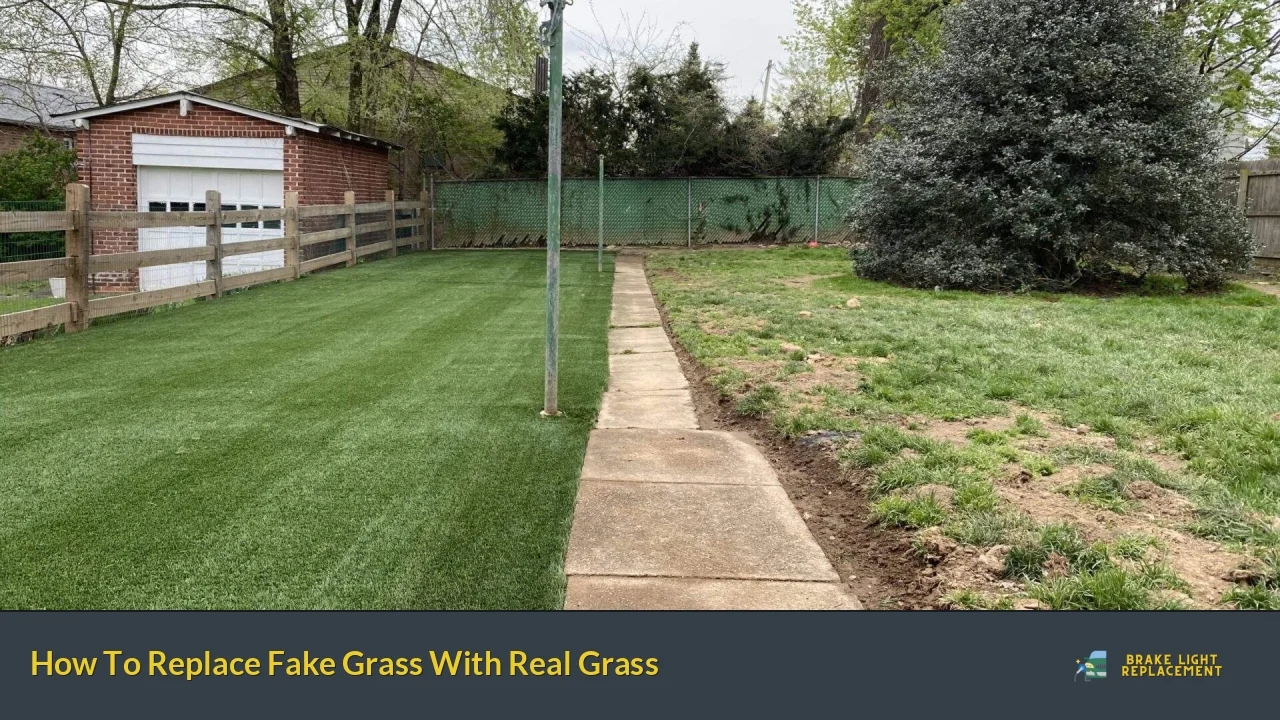Replacing artificial grass with real grass can rejuvenate your outdoor space, providing a natural aesthetic and a healthier environment. Many homeowners find themselves longing for the feel of real grass underfoot, especially if they have pets or children who enjoy playing outdoors. This guide will walk you through the essential steps to successfully replace fake grass with real grass, ensuring a vibrant lawn that enhances your property.
Step Description 1 Assess the area and plan the removal of artificial grass. 2 Remove the artificial turf and any underlying materials. 3 Prepare the soil for new grass. 4 Select suitable grass seed or sod. 5 Install and maintain your new lawn.
Assessing Your Lawn and Planning
Before you begin, it’s crucial to assess your lawn and make a comprehensive plan. Evaluate the condition of the existing artificial turf. Consider factors such as the size of your lawn, the type of soil underneath, and whether you need professional help or can handle the project yourself.
Understanding your local climate is also important. Different types of grass thrive in varying conditions, so knowing whether you live in a cooler or warmer region will guide your choice of grass species. Planning ahead will ensure that you have all necessary tools and materials ready for a smooth transition.
Removing Artificial Grass
The first physical step in replacing fake grass is to remove it carefully. Start by gathering tools such as gloves, a utility knife, and a shovel.
- Cut the artificial turf into manageable strips to make removal easier.
- Remove any pegs or stakes that secure the turf.
- Lift each piece carefully, rolling it up like a carpet.
- Dispose of the artificial turf responsibly; consider recycling options if available.
Once you have removed the turf, check for any underlying infill materials like sand or rubber granules. These should also be removed to prepare for new grass.
Preparing the Soil
After removing the fake grass, it’s time to prepare the soil for real grass. This step is critical for ensuring healthy growth.
- Inspect Soil Quality: Check for compacted soil or debris that may hinder growth. You can use a garden fork or tiller to break up compacted areas.
- Test Soil pH: A pH level between 6.0 and 7.0 is ideal for most grasses. If your soil is too acidic, consider adding lime to raise its pH.
- Add Organic Matter: Incorporate organic matter such as compost or well-rotted manure into the soil to improve fertility and drainage.
- Level the Ground: Ensure that the surface is level and smooth by raking it down evenly. This will help prevent water pooling in low spots.
Selecting Grass Seed or Sod
Choosing the right type of grass is essential for achieving a lush lawn. Consider factors such as climate, sun exposure, and how much wear and tear your lawn will experience.
- Types of Grass: Common choices include Kentucky bluegrass for cooler climates or Bermuda grass for warmer regions. If you have children or pets who play on your lawn frequently, opt for durable varieties like fescue or zoysia.
- Seed vs. Sod: Decide whether you want to sow seeds or lay sod. Seeds are generally more cost-effective but take longer to establish. Sod provides an immediate green lawn but can be more expensive.
Installing Your New Lawn
Once you have selected your grass type, it’s time to install it properly.
- For Seed: Spread the seeds evenly across the prepared soil at the recommended rate. Lightly rake them into the soil and cover with a thin layer of topsoil if necessary.
- For Sod: Lay sod pieces in a staggered pattern to avoid seams lining up. Press down each piece firmly to eliminate air pockets and ensure good contact with the soil beneath.
After installation, water thoroughly to help establish roots. It’s crucial to keep the area moist but not soggy during this initial period.
Maintenance After Installation
Maintaining your new lawn is vital for long-term success.
- Watering: Water deeply but infrequently to encourage deep root growth. Aim for about 1 inch per week, adjusting based on weather conditions.
- Fertilization: Apply a starter fertilizer after seeding or laying sod to promote healthy growth.
- Mowing: Once your grass reaches about 3 inches in height, mow it down to about 2 inches to encourage denser growth.
Regular maintenance practices will ensure that your lawn remains healthy, vibrant, and enjoyable throughout its life cycle.
FAQs About Replacing Fake Grass With Real Grass
- How long does it take for new grass to establish?
It typically takes about 2-3 weeks for grass seed to germinate and establish roots. - Can I plant real grass over existing artificial turf?
No, it’s essential to remove all artificial turf before planting real grass. - What tools do I need for removing artificial turf?
You will need gloves, a utility knife, a shovel, and possibly a garden fork or tiller. - Is it better to use sod or seed?
Sod provides instant results while seed is more cost-effective but takes longer to establish. - How often should I water my new lawn?
You should water deeply about once a week unless conditions require more frequent watering.
By following these steps meticulously, you can transform your outdoor space from artificial turf back into a lush green lawn that enhances both beauty and functionality while benefiting local ecosystems as well. Enjoy your journey back to natural beauty!
